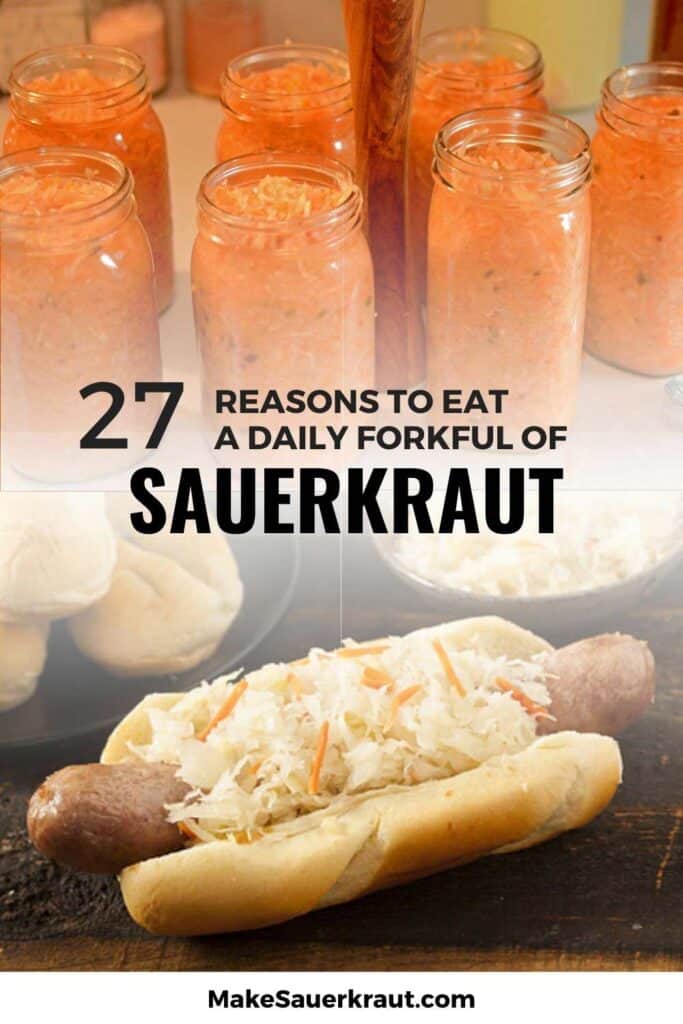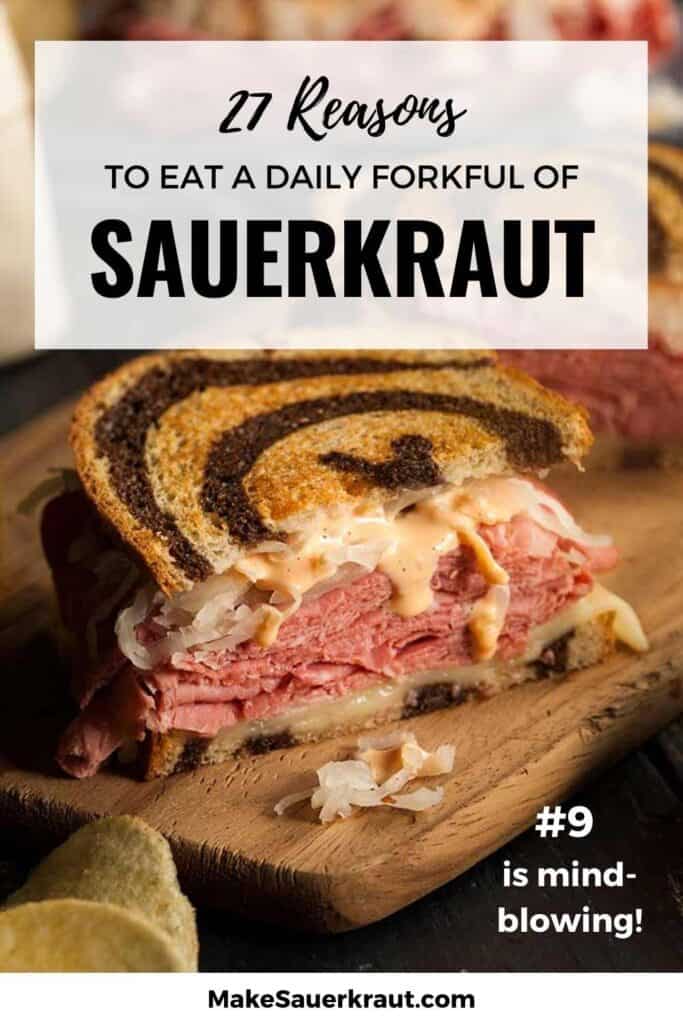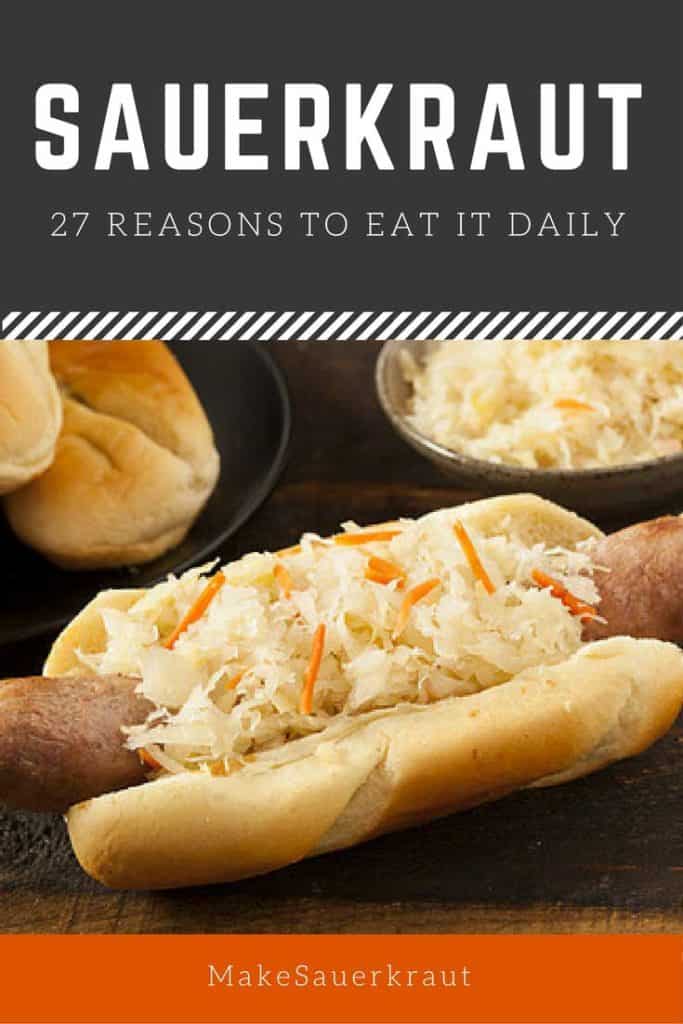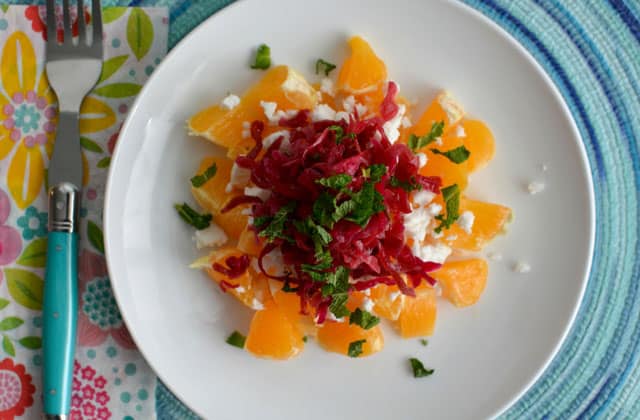Sauerkraut. A neglected food that is so simple and yet so powerful with its many health benefits. When we think sauerkraut, we think Ruben sandwich or hot dog topping. Sauerkraut is more than that.
My mission is to move sauerkraut from an occasional topping on a hot dog to an everyday meal. A condiment that you look forward to and relish, not only for its many health benefits but for its range of flavors.
Benefits of sauerkraut? Here are 27 playful, practical and healthful benefits for including sauerkraut in your life. As you read through the list, keep in mind your favorite, and share it in the Comments section.
- 1. Sauerkraut is the easiest of all the fermented foods to incorporate into your diet.
- 2. Sauerkraut will improve your digestion
- 3. Eating sauerkraut will help to reseed your gut if you’ve taken a course of antibiotics.
- 4. Sauerkraut is the perfect “Gateway Ferment.”
- 5. Eating sauerkraut will not only improve your gut bacteria but will improve your brain function.
- 6. Sauerkraut will be easier and easier to find on grocery store shelves.
- Buy the Right Stuff! FREE Download
- 7. Sauerkraut is a VERY inexpensive probiotic.
- 8. Sauerkraut comes in many flavors and can be made in even more flavors, to please any palate.
- 9. Sauerkraut contains more probiotics than the stuff you buy in a bottle.
- 10. Making sauerkraut will connect you with your greater community, especially those hard-working farmers.
- 11. Making sauerkraut will connect you with trillions of your closest – microscopic – friends.
- 12. Eating sauerkraut can compensate for decreased production of hydrochloric acid as we age.
- 13. Sauerkraut contains more Vitamin C than the cabbage it was made with (magic happens in that jar or crock of fermenting goodness).
- 14. Sauerkraut can boost your immune system.
- 15. Sauerkraut is kid-friendly.
- 16. Making sauerkraut will change what you fear in life.
- 17. Learning about sauerkraut will introduce you to cultures from around the world.
- 18. Making your own sauerkraut will save you money.
- 19. Making your own sauerkraut will enlighten your friends – I hope we don’t scare them off – as you share your skills with them.
- 20. Making sauerkraut will awaken your taste buds.
- 21. Eating sauerkraut may reduce the incidence of breast cancer.
- 22. Making sauerkraut will free your creative spirit.
- 23. Making your own sauerkraut will make you wonder why you would want to use canning to put up food ever again.
- 24. Eating sauerkraut can help our pancreas better do its job.
- 25. Eating sauerkraut will add years to your life… I hope.
- 26. Expanding your fermentation repertoire beyond sauerkraut will increase the population in your home.
- 27. Eating sauerkraut with high-protein foods or foods rich in fat – yummy! – makes the foods easier to digest.
- Which Reason Resonated with You the Most?
- Buy the Right Stuff! FREE Download
1. Sauerkraut is the easiest of all the fermented foods to incorporate into your diet.
Once fermented, that jar of sauerkraut sits in your refrigerator ready to eat.
Scrambled eggs for breakfast? Add a forkful of Kimchi Style Sauerkraut, chopped avocado and a dollop of sour cream.
Salad for lunch? Sprinkle some Passion Pink Sauerkraut on your lettuce and top with a few shavings of Parmesan cheese.
Dinner? Place any flavor as a condiment on your plate and add zing to your meal and aid in its digestion.
Need more inspiration on ways to include it in your diet? See: 7 Easy Ways to Eat Sauerkraut
2. Sauerkraut will improve your digestion

Sauerkraut will improve your digestions within a few days, especially if you are one of 70 million people who suffer from digestive diseases in the United States alone.
Your digestive system contains 100 trillion microorganisms, a number 10 times greater than all the cells in your body. To say they are important is an understatement.
Indigestion, bloating, headaches, brain fog, skin issues, constipation, weight gain, fatigue, back pain? When the ecosystem of your gut has the proper balance of stomach acids and bacteria, your body is able to properly break down food for nourishment and cell repair. If it is not able to absorb nutrients from the foods you eat and eliminate wastes, all types of health issues may arise.
Fermented foods, of which sauerkraut is one, strengthen the health and balance of your digestive system. Improved digestion, that accompanies a healthier gut, makes for improved health.
3. Eating sauerkraut will help to reseed your gut if you’ve taken a course of antibiotics.
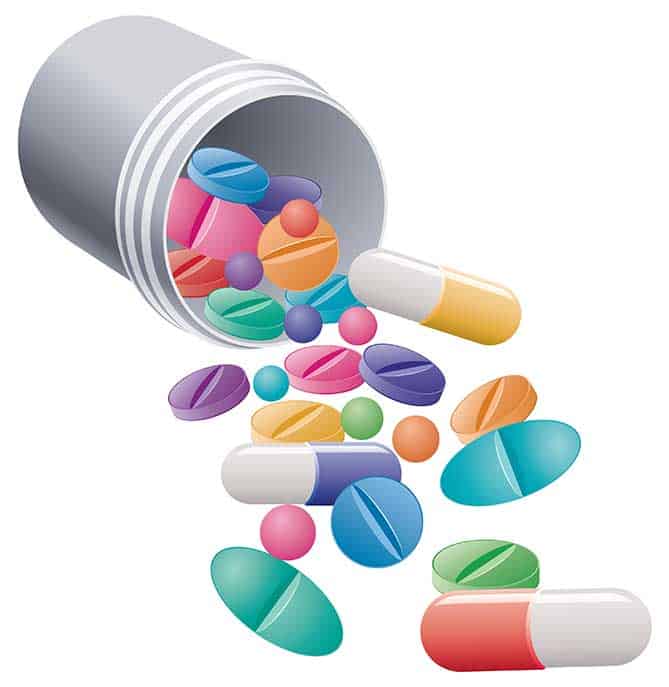
Antibiotics are a marvel of modern-day medicine. Used correctly, they help combat serious life-threatening illnesses.
They work by destroying bacteria and interfering with the formation of bacteria, both the good and the bad.
Every course of antibiotics tends to wipe out the beneficial bacteria and that gives a window of opportunity for the pathogens to proliferate, to grow uncontrolled, and to occupy new niches in your gut. The beneficial flora recovers, but different species of it take between two weeks to two months to recover in the gut and that’s a window of opportunity for various pathogens to overgrow.Dr. Campbell McBride, interview with Dr. Mercola
Dr. Campbell McBride, interview with Dr. Mercola
Don’t give those pathogenic bacteria a chance to gain hold. Reintroduce good bacteria by eating sauerkraut and other fermented foods.
4. Sauerkraut is the perfect “Gateway Ferment.”
Learning to make sauerkraut is perfect for your first foray into fermentation. Hence, the dubious label, the “gateway drug” of fermentation.
It is simple to make. No fancy jars required. No expensive equipment. Just cabbage, salt and time, which can be as little as 7 days!
So get started with my step-by-step photo-rich recipe: How to Make Sauerkraut in a Jar [THE COMPLETE GUIDE]. And, if you never move beyond the fermentation of sauerkraut, don’t worry there’s plenty of goodness in sauerkraut.
5. Eating sauerkraut will not only improve your gut bacteria but will improve your brain function.

Did you know that your digestive system actually produces more neurotransmitters than your brain does? And, that the bacteria you ingested in food can affect brain function?
In an early proof-of-concept study, UCLA researchers found that women who regularly consumed probiotics through yogurt showed altered brain function while in a resting state and in response to an emotion-recognition task.
Functional magnetic resonance imaging (fMRI) scans conducted both before and after the four-week study period looked at the women’s brains in a state of rest and in response to an emotion-recognition task in which they viewed a series of pictures of people with angry or frightened faces and matched them to other faces showing the same emotions.
The researchers were surprised to find that the brain effects could be seen in many areas, including those involved in sensory processing and not merely those associated with emotion. Research learned that signals are sent from the intestine to the brain and that they can be modulated by a dietary change.
Many of us have a container of yogurt in our refrigerator that we may eat for enjoyment, for calcium or because we think it might help our health in other ways. Our findings indicate that some of the contents of yogurt may actually change the way our brain responds to the environment. When we consider the implications of this work, the old sayings ‘you are what you eat’ and ‘gut feelings’ take on new meaning.– Dr. Kirsten Tillisch, associate professor of medicine in the digestive diseases division at UCLA’s David Geffen School of Medicine
– Dr. Kirsten Tillisch, associate professor of medicine in the digestive diseases division at UCLA’s David Geffen School of Medicine
The yogurt used in this study was commercial yogurt with notoriously low levels of probiotics. Consuming yogurt you make yourself, kefir or… sauerkraut will have an even greater impact on your gut health.
6. Sauerkraut will be easier and easier to find on grocery store shelves.
As science reveals more about the benefits of the good bacteria present in traditionally fermented foods, we are seeing a surge in their popularity. In a recent Chicago Tribune article, fermented foods were listed as one of the Food Trends of 2015:
Fermented foods — think yogurt, kimchee and sauerkraut — contain live cultures, or are preserved in liquid so their sugars and starches can become bacteria-boosting agents, which is said to aid digestion.
We’re going to see much more attention on packaging (devoted) to digestive health. We’re going to start pickling all kinds of things. – Lempert, Chicago Tribune.
– Lempert, Chicago Tribune.
Buy the Right Stuff! FREE Download
Use the button below to get your own printable Sauerkraut Shopping Guide.
7. Sauerkraut is a VERY inexpensive probiotic.
A month’s supply of probiotics can easily set you back $20-$40. The cost for a month’s supply of sauerkraut is a head of cabbage and a few jars. What could be more economical? See Triple-Digit Cost Savings of Your DIY Sauerkraut [9 IMPORTANT BENEFITS]
8. Sauerkraut comes in many flavors and can be made in even more flavors, to please any palate.
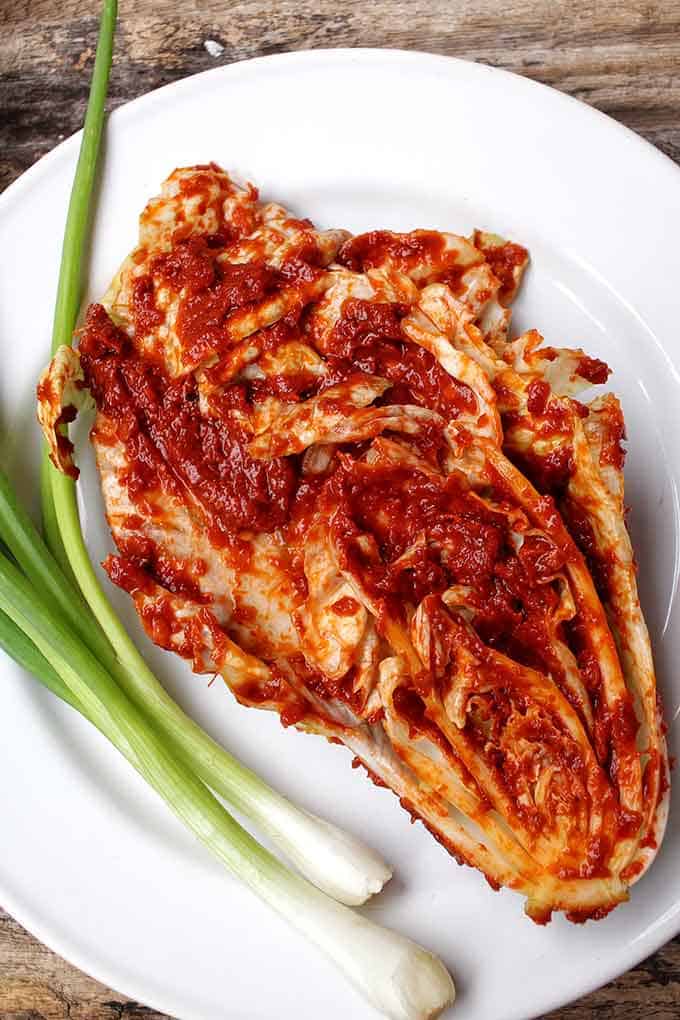
It is estimated that there are over 100 varieties of Kimchi, a style of sauerkraut popular in Korea. Chonggak Kimchi (Young Radish Kimchi), Oisobagi (Cucumber Kimchi) and Pa Kimchi (Green Onion Kimchi) to name a few.
See if any of the many flavors of sauerkraut on my recipe page tantalizes your taste buds: Sauerkraut Recipes to Please Any Palate.
9. Sauerkraut contains more probiotics than the stuff you buy in a bottle.
Fermented foods not only give you a wider variety of beneficial bacteria, but they also give you far more of them, so it’s truly a much more cost-effective alternative.
Here’s a case in point: It’s unusual to find a probiotic supplement containing more than 10 billion colony-forming units. But when a team for Dr. Mercola actually tested fermented vegetables produced by probiotic starter cultures, they found 10 trillion colony-forming units of bacteria. Literally, one serving (a few forkfuls) of the fermented vegetables was equal to an entire bottle of a high potency probiotic! So clearly, you’re far better off using fermented foods.
Goldmine Natural Foods also had their sauerkraut tested. Independent lab testing showed 7.8 million CFU’s (Colony Forming Units) of live lactobacillus and bifidobacterium species per gram. That’s 468 million per ¼ cup serving!
10. Making sauerkraut will connect you with your greater community, especially those hard-working farmers.
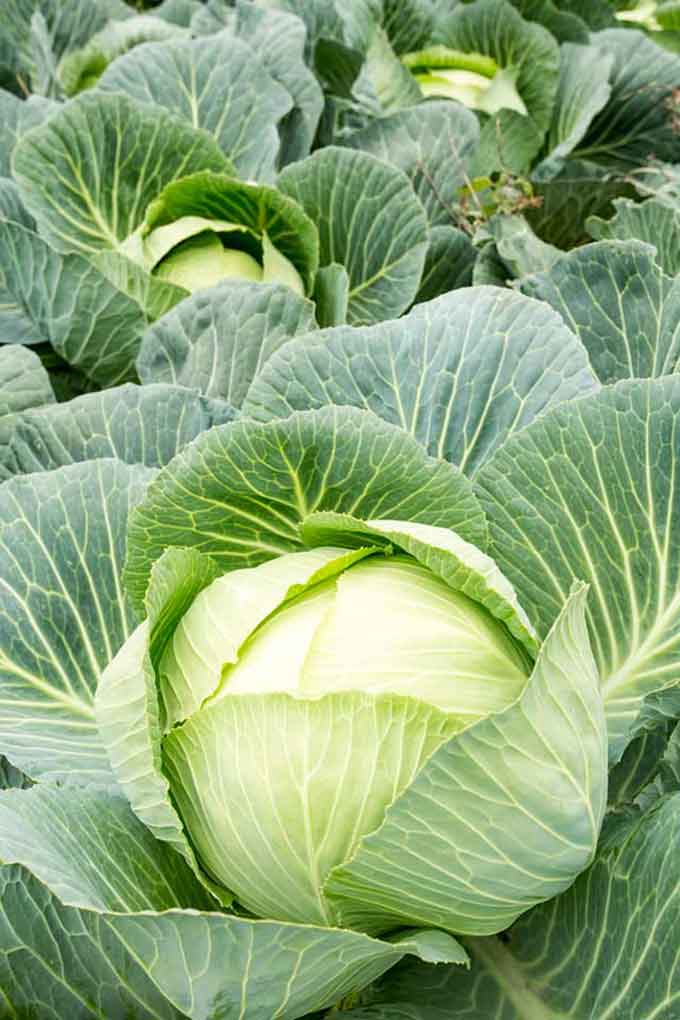
One of the highlights of the week is my Saturday morning visit to the Duncan Farmer’s Market here on Vancouver Island. Our valley is dubbed the “Warm Land” as evident by the range of produce available at the peak of our growing season.
The late Brock (and Heather) from Makaria Farm, kept me supplied with cabbage and other vegetables for fermenting. Elia, renamed the farm to Manna Farm and she now grows the same great cabbage. It is so nice to have a face connected to the food I eat. I can have a conversation with my farmers, know how the food I buy is grown and who I’m investing in by where I spend my dollars.
I happily share jars of sauerkraut with them and I’m assured of having plenty of cabbage, not only for my 50+ quarts of sauerkraut I make in a season but also for all my local workshops.
11. Making sauerkraut will connect you with trillions of your closest – microscopic – friends.
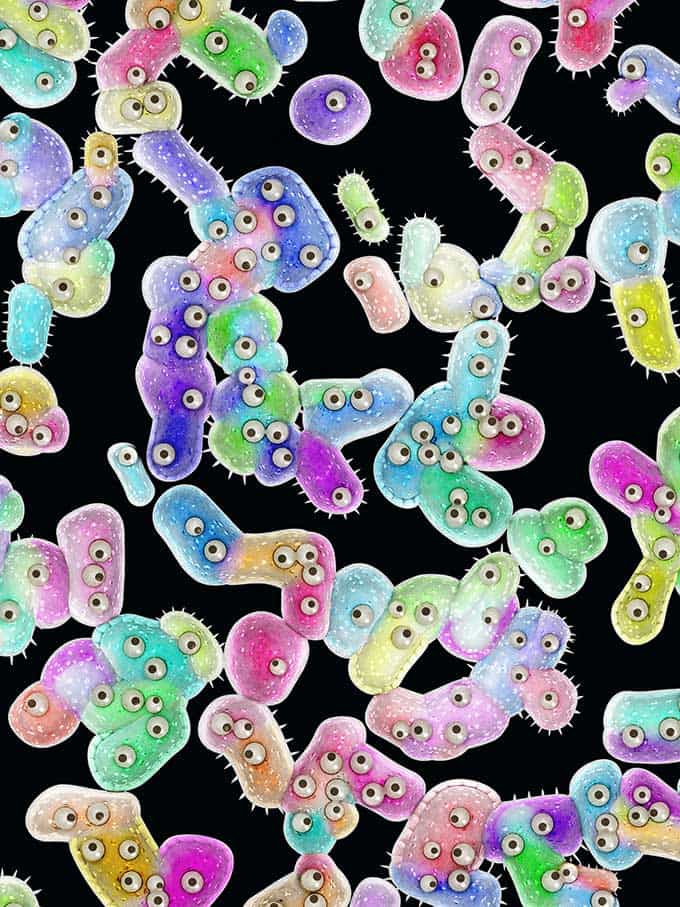
We humans are mostly microbes, over 100 trillion of them. They live and thrive in the mouth, gut, nasal passages, ear canal and on the skin. The bacteria in the microbiome help digest our food, regulate our immune system, protect us against disease and produce vitamins.
These microbes are very small, and even though they outnumber human cells by a factor of ten, they only make up 1 to 3 percent of our body mass. That’s 2 to 6 pounds of bacteria in a 200-pound adult. These microbes are generally not harmful to us, in fact, they are essential for maintaining health.
The Human Microbiome Project was funded in 2008 with the mission of characterizing the human microbiome and analyzing its role in human health and disease. Daily, more and more discoveries are being made about how our microbiome impacts our health. Make friends with them, understand their function and do what you can to make sure they are working for you.
When you make a batch of sauerkraut, you are inviting the microbes in the air, on your counter, on your hands, and on that cabbage into the fermentation jar and asking them to eat the sugars in the vegetables, multiply rapidly and make copious amounts of lactic acid for you, so they can preserve the cabbage and create sauerkraut tang!
12. Eating sauerkraut can compensate for decreased production of hydrochloric acid as we age.
As we age, our stomach’s natural secretions of hydrochloric acid decrease. Hydrochloric acid acts as a barrier to prevent harmful bacteria and parasites from invading your digestive system. Hydrochloric acid also improves digestion in our stomach by breaking down food so it can be more easily absorbed by the small intestine.
The lactic acid from sauerkraut can partially compensate for reduced hydrochloric acid by introducing beneficial bacteria that can reproduce and turn into more lactic acid.
13. Sauerkraut contains more Vitamin C than the cabbage it was made with (magic happens in that jar or crock of fermenting goodness).
The fermentation process increases the bioavailability of nutrients rendering sauerkraut even more nutritious than the original cabbage. So the Vitamins C, E, and K already present in the cabbage are better utilized by your gut by consuming the fermented cabbage – sauerkraut! – instead of eating coleslaw.
14. Sauerkraut can boost your immune system.
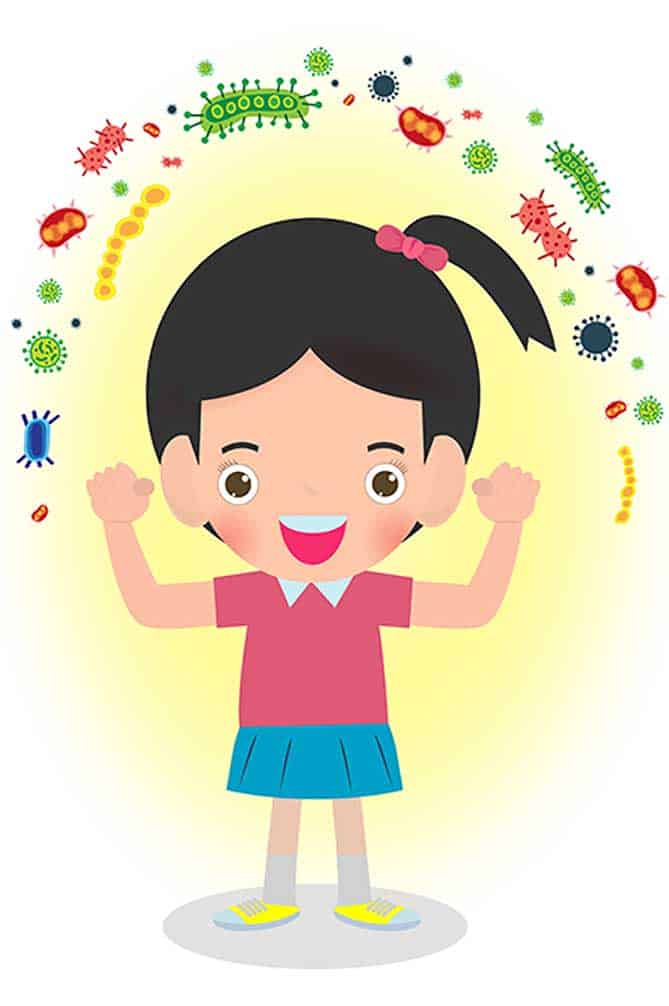
70-80% of our immune system is located in our gut.
If you have poor gut flora and suffer from digestive issues, you’ll be more susceptible to colds and flu.
By eating sauerkraut, and other foods rich in probiotics (kefir, yogurt, kimchi), you are improving your gut flora and reducing the chances of catching every bug that flies your way.
15. Sauerkraut is kid-friendly.
When you add a bit of sweetness to your sauerkraut, with either grated carrots or a grated apple, most children enjoy it. In our family, a few jars of sauerkraut sit on the table with the evening meal. We each then choose our flavor and add a few forkfuls to our plate.
If this doesn’t work, try tossing some sauerkraut into a salad or next time you make tacos, add a bit of kimchi to the fixings.
Remember, sauerkraut is teeming with beneficial bacteria and eating just a few strands of the stuff can do wonders.
16. Making sauerkraut will change what you fear in life.
We have been so ingrained to not leave food on the counter for fear that the bad stuff – botulism! – can take hold and rapidly multiply. Don’t worry botulism does not grow in the acidic environment created in the fermentation process for sauerkraut.
The bacteria Clostridium botulinum is everywhere. We don’t get sick from it because most of the time it lies dormant. According to some research by Tim Hall on the Wild Fermentation forum: “C. botulinum prefers an anaerobic (oxygen-free) environment that’s not too acidic, not too salty and not too crowded with other bacteria.”
C. botulinum does not like the bacteria in sauerkraut. In addition, the salt we add in the fermentation process creates an environment hostile to C. botulinum.
So instead of worrying about the food you are making with your own hands in your own kitchen, question your lack of fear for consuming canned and packages foods made in huge factories by no-name people we have no relationship with us.
17. Learning about sauerkraut will introduce you to cultures from around the world.

If you lived in Korea, every November you would be given a “bonus” and time off to prepare Kimchi, a type of sauerkraut, for the upcoming winter. Kimchi is the flaming heart of Korea, a spicy national dish made with Napa cabbages, radishes, green onions, ginger, garlic, and a chili paste.
Giant-sized Napa cabbages are unloaded everywhere. Families gather together soaking the cabbages in a brine, chopping vegetables and making chili paste.
In the Seoul City Hall plaza, over 2,000 volunteers gather to make kimchi for the needy. 270 tons were made one recent year. That is a lot of kimchi.
And, Koreans consume a lot of kimchi; 1 quart weekly! American consume 1 quart of sauerkraut annually. Let’s see if we can catch up with them.
18. Making your own sauerkraut will save you money.
Currently, the average price for a 16-ounce jar of Pickled Planet sauerkraut is $7.50. You need two of these to make a quart: $15.00. If your family eats a quart per week, you would spend $780 annually on sauerkraut.
If we buy cabbage at $2 per pound, need 2 pounds per quart and throw in some other vegetables and some salt, your costs might be $6 per quart. Making your own would cost $312, annually.
Yes, you do have start-up costs of jars, lids, a scale, and an optional mandoline. Purchase those your first year and then, use your savings to buy a fermentation crock which contains a clever design that allows carbon dioxide to escape the crock while keeping unwelcome microbes like mold out and takes the flavor profile of sauerkraut to a whole new level.
19. Making your own sauerkraut will enlighten your friends – I hope we don’t scare them off – as you share your skills with them.
In the pipeline for this website is a “Pass It On!” kit. In Jamie’s Food Revolution, Jamie Oliver has readers learn a recipe then pledge to pass it on (“it” being their cooking skills) by inviting over a few friends and teaching them the recipe.
I run this website because I want everyone in each of our communities enjoying sauerkraut on a daily basis. So I would love it if you first learn to make sauerkraut and then have a “Sauerkraut Party” to “Pass It On.” And, to borrow from Jamie Oliver:
And don’t think for a moment your single contribution won’t count, because it will. Let me share a bit of my romantic dream with you… Let’s say, for instance, that you teach four people how to make sauerkraut, then each of them teaches four more people, who each teach four more people….

The cycle only needs to repeat itself seven times and we’ve packed out Yankee Stadium (meaning over 50,000 jars of sauerkraut have been made!) one-and-a-half times. Repeat it thirteen times and we’ve got more than the entire population of the United States with a jar of sauerkraut on their dinner table. High aspirations, I admit, but why not?
Making sauerkraut will force you to practice the art of patience.
Waiting for up to 28 days before you can eat something is not practiced in our culture of instant gratification.
The watching and waiting are fun for the first week. Aromas fill your kitchen. The microbes are so active, brine overflows the fermentation vessel. Little bubbles rise to the surface. If you are using a crock, you’ll hear little blop, blops as the air escapes the crock. And then, visible action stops, and you wait. And as you wait, the flavor continues to develop.
Inpatient? It’s “legal” to start eating your delicious homemade sauerkraut in just 7 days.
20. Making sauerkraut will awaken your taste buds.
You`ll never know food could taste so good. There is a depth of flavor to fermented foods that is no match to the industrially processed stuff.
Just compare a can of pasteurized sauerkraut to a colorful jar of artisanal sauerkraut found at your local health food store or made by you! Or, freshly brewed Kombucha to a can of soda pop.
There is a deep satisfaction found in eating food that is alive and rich in nutrients.
21. Eating sauerkraut may reduce the incidence of breast cancer.
Researchers fed mice a fast-food diet. Compared to controls, these mice had a predisposition to mammary (breast) cancer. Researchers then repeated these trials but gave some of these fast-food mice the probiotic, Lactobacillus reuteri. Those mice that received the probiotic had a significantly lower rate of mammary cancer symptoms than those that didn’t.
The researchers go on to suggest that L. reuteri may be increasing the development of a certain type of immune cell which may be responsible for exerting the underlying anticancer effects they are observing.
Probiotic bacteria decreased already developed tumors, and, in some cases, prevented tumor growth in animals predisposed to cancer by directly influencing the immune system. These results reinforce the idea that probiotics are important for a healthy immune system, which is important for overall health.
L. reuteri is found in many fermented foods including fermented dairy products, fermented meat products, and lactic acid fermented vegetables, that is sauerkraut. So keep eating that yogurt, kefir, and… sauerkraut!
22. Making sauerkraut will free your creative spirit.
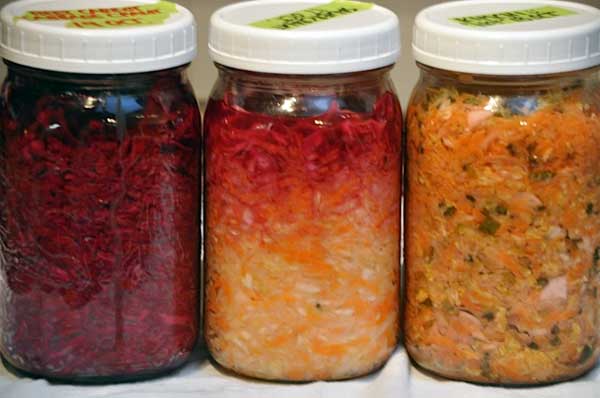
Now, this is art!
What is making that beautiful orange-red color working its way down the jar in the middle?
See the bottom of this post for an answer.
23. Making your own sauerkraut will make you wonder why you would want to use canning to put up food ever again.
I love my canned peaches and cherries and many summers put up a few batches of each.
However, thinking of all the prep work, the big hot pot of water, making sure everything gets to the right temperature and carefully lifting jars out of boiling water often finds me throwing sliced fruit into freezer bags instead.
24. Eating sauerkraut can help our pancreas better do its job.
Your pancreas produces a variety of essential digestive enzymes that break down starches, proteins, and fats. Unpasteurized sauerkraut is very high in viable enzymes that work just like the ones from the pancreas.
25. Eating sauerkraut will add years to your life… I hope.
Remember great gut health makes for great overall health.
26. Expanding your fermentation repertoire beyond sauerkraut will increase the population in your home.
Many fermented foods (Kombucha, yogurt, kefir, sourdough bread) require a culture or bacteria to start the process.
You’ll end up adopting a variety of pets: a Kombucha SCOBY, yogurt starter, sour cream culture, a ginger bug, sourdough starter, milk Kefir grains, and water Kefir grains. Some pets you even have to feed on a regular basis. Help.
One step at a time. Know your limit and ferment wisely!
27. Eating sauerkraut with high-protein foods or foods rich in fat – yummy! – makes the foods easier to digest.

Sauerkraut as artwork? What made the red color in that jar of sauerkraut?
The red color comes from a red cabbage leaf.
When making sauerkraut, the cabbage mixture needs to be held below the brine. Usually, this is done with a green cabbage leaf torn to size to fit in the jar and then a weight placed on top, before screwing on the lid. My friend Heather, who sent me this photo, had no green cabbage leaf and used instead… a red cabbage leaf.
Who knew such beauty to be so simple?
Which Reason Resonated with You the Most?
There you have it, 27 reasons to add sauerkraut to your diet.
Now that you know some of the many benefits of sauerkraut, how delicious sauerkraut is, and how easy it is to incorporate into your diet, I encourage you to either learn to make your own sauerkraut with my step-by-step photo-rich recipe or go out and buy your own with my Buy the Right Stuff Guide.
Buy the Right Stuff! FREE Download
Use the button below to get your own printable Sauerkraut Shopping Guide.
Feel free to share the reason that most resonated with you in the Comments section below. Or, add your OWN REASON to make or eat sauerkraut!

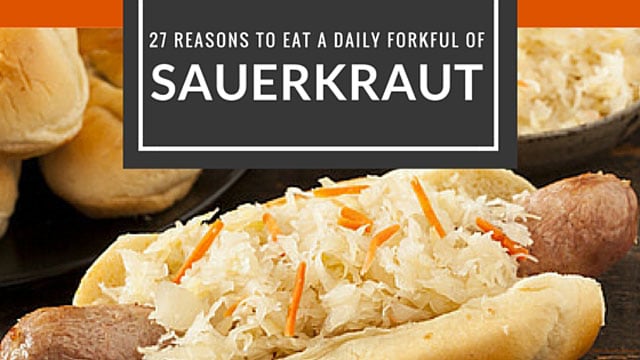

 This post may contain affiliate links which won’t change your price but will share some commission.
This post may contain affiliate links which won’t change your price but will share some commission.